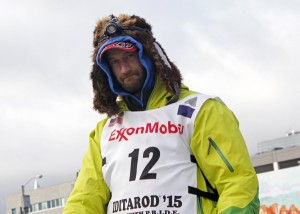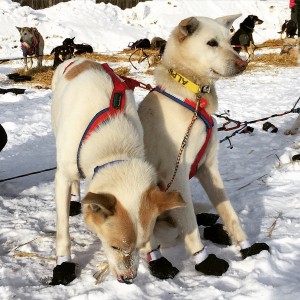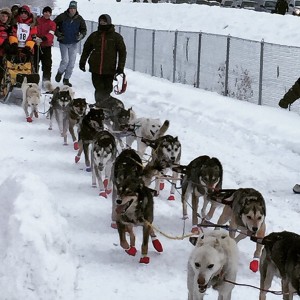Girdwood’s Nicolas Petit pulled into Manley Hot Springs just after 3 a.m. Tuesday, with Martin Buser, Hugh Neff, DeeDee Jonrowe and Aaron Burmeister less than two hours behind.
The competition in this year’s Iditarod Trail Sled Dog Race can only be described as stiff. There are six returning champions and a handful of other mushers vying for a top-10 finish. But, mushers are all feeling a little new to the race as they travel down an unfamiliar, rerouted trail.
Last month, Brent Sass won the 1,000 mile Yukon Quest International Sled Dog Race. This month, he says his recent win adds a little pressure to his Iditarod run.

“And this new route really plays into the favor of guys who like to run long distances and stay out of checkpoints,” Sass said. “There’s only five checkpoints in the first 500 miles, but there’s usually 12 in the first 500 miles.”
This year, there are three runs in the first half of the race that are longer than the longest run on the original southern route – the route that has been diverted this year due to poor trail conditions.
But long runs don’t faze former champion Mitch Seavey.
“It’s only as long as you make it,” he said.
Seavey says he’s also found a silver lining to this year’s reroute.
“Well, it saved us a lot of dog food because when you send stuff to all those places and then drive right by it and leave it behind, you just waste a lot,” he said. “So in this case, we’ll utilize what we have at the checkpoints and use those checkpoints to our advantage, but the dogs are still only trained for certain things and the more we adapt our race plan to what the dogs are trained for, the better our result’s going to be.”

The older Seavey has some simple advice for the rest of his competition: “Just mush!” he says.
“That’s become our mantra,” Seavey said. “There’s so many things you can worry about, you can analyze this and that and the other thing but at the end of the day, just mush!”
It’s advice he likely gave to his son, and defending champion, Dallas. But recently, the younger Seavey was doing a little more than just mushing. Last week, he travelled by snow machine between Huslia, Koyukuk and Galena to find out what the new trail has in store.
“What’s the trail like? What does it look like what’s the country like? Is there going to be mountains how does it react to snow, wind, cold?” Dallas said. “You know if you see big open swamps, it’s maybe more likely to drift. If there’s thick forest, it’s more likely to get packed out and stay there.”
“There’s certain things you see, so information is very valuable, it helps it make good decision as a dog drover or a coach, right?”
It’s a trip he’s not keen on publicizing.
Dallas: “The information I may or may not have gotten has been very valuable.”
Emily: “Why the secrecy?”
Dallas: “I don’t want to be the guy who knows, because then you’re the guys that everybody asks.”
What he knows for sure is who he’ll be racing against. The competition has become all too familiar. He’ll keep an eye out for his father, Aliy Zirkle and, he suspects, Jeff King.
“Certainly in the last several years, Jeff’s had some ups and downs, but there hasn’t been a single race that we haven’t counted him out,” Dallas said. “The last three or four years now, at some point he was a seriously threat to win the race, so to count Jeff out because he scratched, it doesn’t matter, he’s a good dog driver and you’ve got to take him seriously.”

“If anybody is not watching me, they’re not doing their homework,” Jeff King said.
King, a four-time Iditarod champion, says despite a few early long runs and a trail that predominantly follows a flat river for the first half of the race, what he and the rest of his competitors really have going for them is that everyone is new to the rerouted trail.
“Most of us didn’t stop at all the checkpoints before and now they are long runs, but there’s also no mountains and it’s river and depending on the weather, my team and many others can do a 100 mile run pretty easily,” King said.
Teams are facing a stiff, cold wind as they make their way down both the Chena and Tanana Rivers toward Manley. Fresh snow is likely to drift and with night time temperatures forecast below zero, wind chill will also be factor.




